India stole my heart. I’ve said it before, and I will no doubt say it again, but it really did. While the ancient temples and palaces left me in awe, while the stunning beauty of Matheran left me speechless, it was really Bombay (as it was known then) which did it. For someone like myself with a nomadic upbringing and who stopped counting all the places she lived in before she was even twenty-one, Bombay somehow felt like home. It was the perfect mix of East and West, a city of contrasts with such incredibly high energy and with such a gusto for life that it left one feeling just a little more alive.
Among my many memories of Bombay was one day which began with lunch at the Queen’s Necklace, a sweeping, gleaming curve of beautiful white buildings by the sparkling, electric-blue sea, and which ended at the wee hours of the morning the next day, staggering out from an exclusive nightclub to see lines of mango sellers with their stalls before us. There were cars and people everywhere, the street lights glittered, and the sheer volume of noise outside quite rivaled anything inside. Mumbai at night is as much an electric jolt of energy as Mumbai by day — perhaps more so.
From Moscow and Shanghai to New York or Paris, I’ve never quite seen or felt anything to rival the brightness, bustle and expresso-in-the-arm energy of Mumbai. Nor have I ever encountered a perfume that encapsulates the sights, the sounds, the colours, and the very feel of a city. Not until Bombay Bling, a ravishing, euphoric explosion that really has to be tried to be believed. I fear that I simply won’t be able to do it justice, this wildly energetic creation that — unbelievably — has managed to bottle a whole city’s bursting zest for life.
Bombay Bling is one of a trio of Indian-inspired scents from the Indie perfume house, Neela Vermeire Créations, Parfums Paris (“NVC”), and it was justifiably chosen by the prestigious perfume website, CaFleureBon, as one of their top 25 fragrances for 2011. Launched in late 2011, it is the result of collaboration between Ms. Vermeire and the famous perfumer, Bertrand Duchaufour. Each of the three fragrances that they created is meant to pay homage to a different part of India’s history, with Bombay Bling (the third and last in the line) representing modern India and, in specific, the glorious vitality of Mumbai.

As the company’s website explains:
This joyful creation embodies every aspect of the very modern, colourful, eclectic, esoteric, ecstatic, liberal, happy side of buzzing India, a world economic power, where nothing is to be taken for granted, where the underbelly of the big city combines with the glitter of Bollywood on the vast sandy stretches of Juhu Beach and the Queen’s Necklace. Fortunes are made and lost on the Bombay stock exchange and gambling dens of Mumbai. Abandon yourself to the nightlife as dawn breaks over the city. There is nothing like it and there will be nothing like it. Welcome to a vibrant new India!
I can’t recall the last time I read a press release or perfume backstory and thought to myself, “I’ve actually experienced part of that tale!” And I have with Bombay Bling. (Well, minus “the fortunes made and lost” bit, unless you count the small fortune I lost shopping and at the races.) But I can tell you that Bombay Bling delivers on its promise because it truly took me back to the city, collapsing space, time and geography in a remarkable way.
The perfume manages this feat, in part, due to its long list of notes. Unlike many perfumes nowadays with their six or, maybe, eight ingredients, Bombay Bling has seventeen! The fruity-floral oriental has:
Mango, lychee, blackcurrant, cardamom, cumin, cistus, Turkish rose, jasmine sambac, Madagascar ylang-ylang, tuberose, plumeria [frangipani], gardenia, patchouli, tobacco, sandalwood, cedar, vanilla.
Bombay Bling opens with a veritable BOOM of mango! It’s an explosion of the 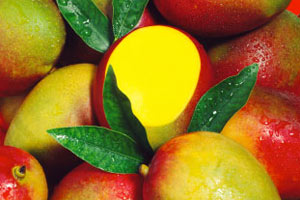 zestiest, sweetest, juiciest mango you’ve ever tried — short of cutting in twenty fresh ones and reducing them down to their most concentrated levels. It’s unbelievably fresh and bright. Even though Ms. Vermeire has used green mangoes — not yellow ones — yellow, red and orange are the colours that practically shine before your eyes.
zestiest, sweetest, juiciest mango you’ve ever tried — short of cutting in twenty fresh ones and reducing them down to their most concentrated levels. It’s unbelievably fresh and bright. Even though Ms. Vermeire has used green mangoes — not yellow ones — yellow, red and orange are the colours that practically shine before your eyes.
Seconds later, other notes follow. There is tart black currant (or, as I call it, “cassis”), carrying a hefty punch of zesty tanginess, and sweet, light lychee. There are also light hints of jasmine and rose, too, but the accompanying floral notes are primarily dominated by sweet plumeria. It’s soft, fruity, almost peachy, and has a subtle creaminess.
Thirty minutes in, the fruity-floral notes take on another hue with the arrival of sandalwood. It adds a slighty smoky creaminess and an element of woodiness to the mix. There is also a growing whisper of tobacco. It’s not sweet or fruited like pipe tobacco, nor is it anything close to cigars, but rather, like tobacco leaves being cured in the sun: honeyed, dry, and a little woody, as well as a little nutty. Or perhaps that last note comes from the cardamom — it’s sometimes hard to tell with a perfume that’s as superbly well-blended as this. Either way, the tobacco note adds a lovely depth and contrast to the perfume’s sweetness. It’s never masculine, heavy, or coarse but then, nothing in this lovely perfume is.
For some reason, my nose also detects something that really smells like bright, zesty lemon, along with a hefty dose of fresh ginger. To my surprise, there is also something that smells distinctly like anise or black licorice. None of these ingredient are in the perfume, but that’s what it smells like.
What I don’t really smell in the perfume is any one particular flower. Though there tuberose, rose, gardenia and ylang-ylang, they’ve all been blended into a single, very feminine, sweet floral accord. This isn’t a perfume where you can smell, for example, tuberose in any dominant way; by the same token, neither the ylang-ylang nor the rose trump all the others. Perhaps the plumeria does most of all but, as a whole, no single flower really stands out — and that’s a very good thing. Tuberose, gardenia and ylang-ylang can be very indolic, heavy, even bullying notes. In less capable hands, they can lead to headaches and a sense of over-ripeness that verges on rotting fruit, sourness or plasticity. None of that ever happens here.
All these new additions add further complexity to the perfume and take it far beyond the confines of a mere “fruity” scent. The sudden spiciness, subtle dryness, and smokiness are a noted contrast to zesty mango and the tart cassis fruits, as well as to the sweetness of the slightly tropical florals. Each note adds up to much more than individual parts, creating a balanced, harmonious whole that is never boring, singular, or generic.
The combination of these contrasting elements means one thing: Bombay Bling simply doesn’t smell like any fruity-florals I’ve encountered. And it is a testament to the very sure, very expert hand of the legendary Bertrand Duchaufour that all these eclectic, rich notes melt so perfectly together without any discord or abruptness.
By the second hour, there are still further newcomers on the scene. This time, it’s pine needles! The cedar tree has a distinct role here, adding some chilled freshness and coolness to the mix. It brings to mind a pine forest where the floor is covered with sweet florals but there are tangy black currant berries in bushes nestled near the giant roots of the tree. It’s unexpected — like much of this perfume — and it’s the one time that Bombay Bling didn’t truly evoke Mumbai for me. Then again, eclecticism and sharp contrasts is perhaps the ultimate embodiment of that city of paradoxes.
Four hours in, Bombay Bling is a fascinating mix of tart cassis, cool cedar pines, creamy sandalwood, and some slightly musky jasmine, with just a faint dash of earthy, dry cumin. The earthiness and spiced dustiness underlying the sweetness really brought me back to the dusty, spicy, sweet aromas of Bombay’s bustling street bazaars. But the really entrancing part is the sandalwood. It’s copious and positively swoon-worthy.
As Ms. Vermeire showed in the astoundingly beautiful Trayee, she prefers to use real Mysore sandalwood. That is a very rare thing in perfumery today given its prohibitive cost and the Indian government’s protection of this over-sourced prized wood. The expert perfume critic, Luca Turin, has often bemoaned the use of a synthetic replacement in “sandalwood” perfumes or the reliance on the very different Australian sandalwood, and he’s right. Real sandalwood is usually too expensive for most perfumers, especially if used in any significant quantity.
Here, as in Trayee, there is a significant amount of absolutely genuine, lovely sandalwood. And it dominates the final hours of Bombay Bling’s development. At the ninth hour, the perfume is sandalwood and cedar with tart black currant and hints of some musky jasmine. By the thirteenth hour, it’s just sweet, soft vanilla and creamy sandalwood. Yes, I said the thirteenth hour. Bombay Bling’s pure essences and rich ingredients makes this one very long-lasting perfume! Even on my voracious skin where very little lasts for a significant amount of time, Bombay Bling had incredible longevity. I smelled faint traces of it here or there well past thirteen hours, truth be told.
It is remarkable and supports everything Ms. Vermeire has said regarding her goal of using only the finest raw materials and expensive essences in her perfume. For example, her amazing Trayee was made without regard to cost:
I did not give a budget cap so Bertrand Duchoufour never had a budget – Trayee is one of the most expensive perfumes he has created. We made sure there are lots of high quality natural ingredients…. Most niche companies want to spend 150 euros or so max per kg of essence. We went more than 7 times that so the essences are expensive (and hopefully exceptional).
The same “to hell with the cost, we’ll only use the very best” approach shows with Bombay Bling, too. Neela Vermeire Creations is a tiny company that clearly has put the bulk of their resources in their production costs. The perfumes are not cheap, but they don’t work with giant distributors to add further mark-ups to their expenses. There is no corporate slickness behind any of this. When you order from the company, you will receive a handwritten note from Ms. Vermeire herself.
The goal is one thing and one thing only: to make truly rich, luxurious-smelling perfumes that are the very best they can possibly be. And Neela Vermeire Creations has succeeded in that goal with one perfume, Trayee, receiving a Fifi award nomination (the perfume world’s equivalent of an Oscar nomination) and the other, Bombay Bling, being critically-acclaimed as one of the best perfumes of its year.
Bombay Bling deserves that accolade without question. What you have is an unbelievably vibrant, bouncy, joyous scent. Like the Bollywood movies that it is a partial nod to, Bombay Bling screams out high-octane energy and begs you to “be happy!” and “go dance!”
It’s hardly surprising, therefore, that when the perfume blog, Olfactoria’s Travels, recently asked “What is the most uplifting perfume you know?,” the repeated answer was “Bombay Bling!” Read the answers; the references to Bombay Bling are so numerous, that Birgit at one point said it should be considered as “prescription medicine.” It’s not just the readers of Olfactoria’s Travels, either. On numerous different sites or perfume groups, people repeatedly turn to Bombay Bling when they’re blue, when the weather is grey and chilly, or when they’re in need of an energetic pick-me-up.
On Fragrantica, there is almost a uniformly gushing assessment of the perfume. One commentator raves that it is like ” like the spirit of Mardi Gras or Carnival captured in a bottle,” while another writes “[h]appiness and sunshine in a bottle, this makes me see the perfume in rainbow of colours. Full bottle worthy???? Every last penny of it to me.” Clearly, Bombay Bling’s happy, incredibly exuberant heart seems to make it people’s “secret happiness weapon.”
Bombay Bling is not cheap. It costs $260 for a 1.8 oz/55 ml bottle. In perfumery, as in many other things in life, cost is no guarantee of either quality or a positive experience. But, in this case, I think you are actually getting what you pay for. There are many similarly priced perfumes out in the luxury market (albeit, usually for a slightly larger sized bottle) but the luxuriousness of Bombay Bling’s ingredients make it truly stand out. To me, it is the equal of perfumes from Ormonde Jayne and the uber-luxury perfume house, Amouage, and far surpasses many fragrances from better-known, luxury perfume houses. Thankfully, however, Ms. Vermeire offers a Discovery Set (see below, in the Details section) which lets you try 10 mls of all three of her perfumes for a very reasonable price.
I highly recommend Bombay Bling. The complex notes mean that you don’t have to be just a fan of fruity-florals to like this scent. Nor do you have to be a woman. There are a number of men who adore and wear Bombay Bling. On Luckyscent, the perfume is categorized as “unisex,” and I think it is.
The sillage is not overwhelming, either, so it is definitely something that can be worn to the office. In fact, I was surprised by how moderate the projection was for a perfume with notes as rich and as heady as these. After the first thirty minutes, I’d say the perfume could be detected only from a distance of about two feet away. It’s a strong perfume, and you can smell it on yourself, but it’s softer than Trayee. And it’s definitely no Fracas that’s going to immediately overwhelm someone across the room. Thereafter, the projection became much less and you’d have to be close to someone to detect it. I also noted that Bombay Bling is even more moderate when you only dab on a little, as opposed to applying a few sprays. It’s office-friendly, but it’s also something that is extremely versatile. I could see this being used as an antidepressant in a bottle, to go on a date, or just to have dinner with friends.
In short, it’s sexy, it’s happy, and it wants you to dance, dance, dance! I suggest you take it up on its offer.
Disclosure: My sample was courtesy of Neela Vermeire Creations. However, that did not impact this review in any way.
DETAILS:
Cost & Availability: In the U.S., Bombay Bling is available exclusively at Luckyscent where it costs $260 for a 50 ml bottle. Samples are also offered at $7 for a 0.7 ml vial. (And the site ships world-wide.) A much better offer comes from Neela Vermeire Creations itself which offers Bombay Bling as part of a Discovery Set that includes the award-nominated Trayee and Mohur, Neela Vermeire’s rose perfume.The set is available exclusively on the company’s website. It costs: €21 (or about $27) for three, much larger, 2 ml vials; or $117 or €85/90 (depending on your location) for three large 10 ml decants. Shipping is included in the price. In Europe, Trayee costs €200 for the 55 ml bottle and is available at Jovoy Paris, the Swiss Osswald Parfumerie and Munich’s Sündhaft. You can find a few additional retailers from the Netherlands to Moscow which carry Trayee on the store’s Points of Sale page.




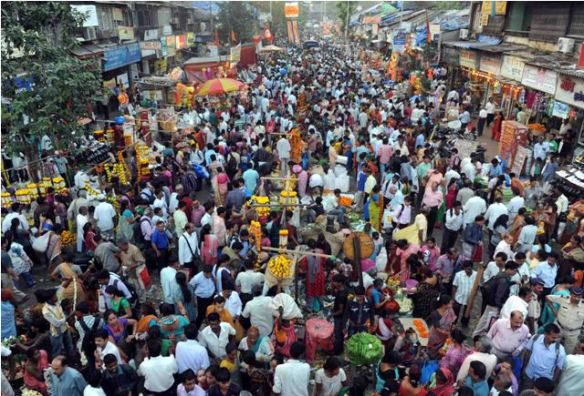
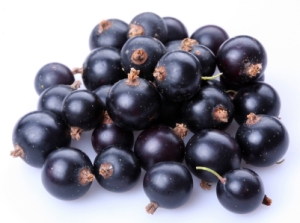



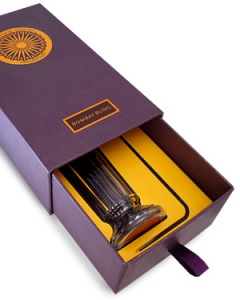
 animalic notes. There is leather, incense, musk and boozy amber, but still under the umbrella of Cherry Coke. Or perhaps it’s closer to root beer now? I can’t get the impression of an 1950s soda fountain out of my head. The perfume is — like all Bertrand Duchaufour creations, superbly well-blended — so different notes only occasionally rise to the foreground but there is no getting away from that initial soda impression. On me, the leather notes are very subtle; the incense and musk are far more predominant. During the final stage, Mon Numero 10 becomes quite lovely: incensed rose with amber that is just barely boozy but always rich. It’s like a sheer veil just touching my skin.
animalic notes. There is leather, incense, musk and boozy amber, but still under the umbrella of Cherry Coke. Or perhaps it’s closer to root beer now? I can’t get the impression of an 1950s soda fountain out of my head. The perfume is — like all Bertrand Duchaufour creations, superbly well-blended — so different notes only occasionally rise to the foreground but there is no getting away from that initial soda impression. On me, the leather notes are very subtle; the incense and musk are far more predominant. During the final stage, Mon Numero 10 becomes quite lovely: incensed rose with amber that is just barely boozy but always rich. It’s like a sheer veil just touching my skin.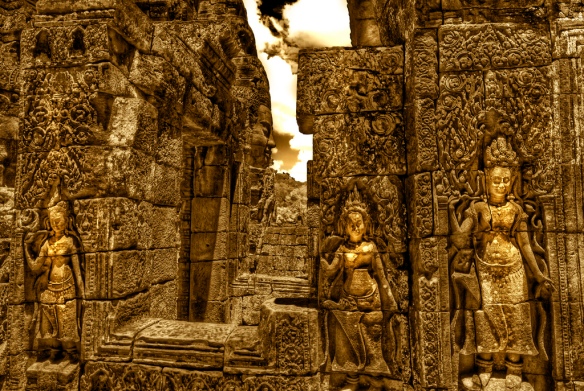
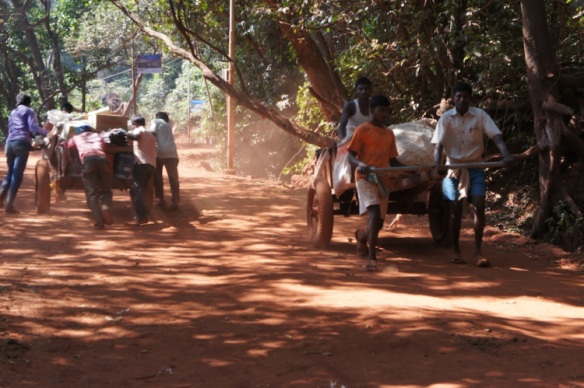
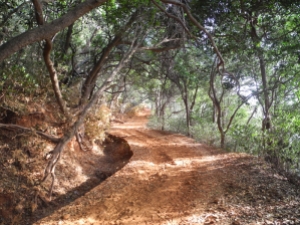
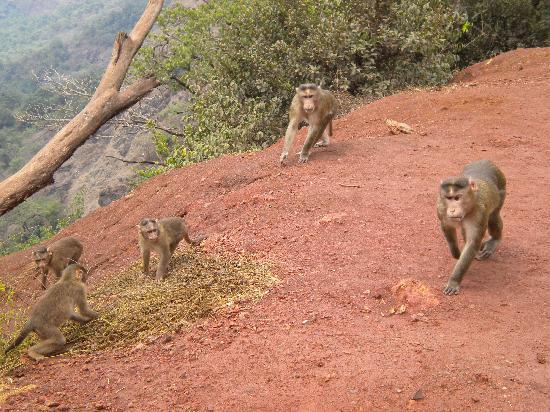
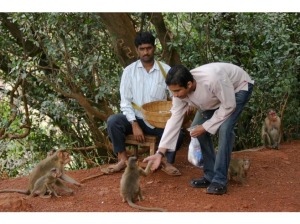

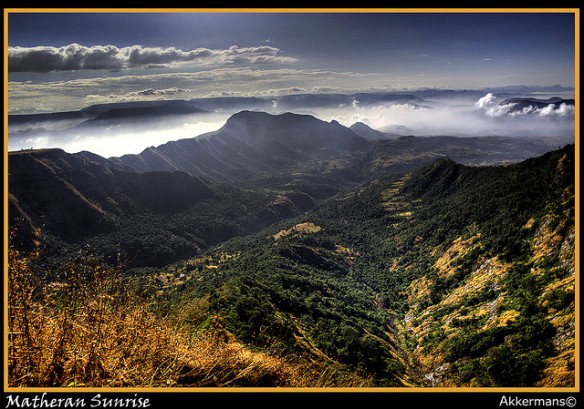
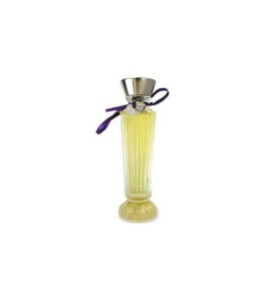
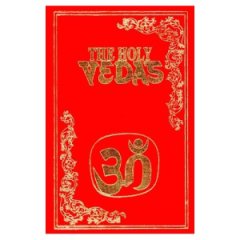
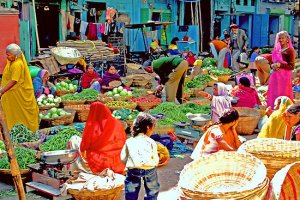
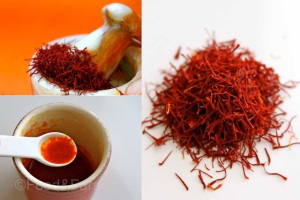

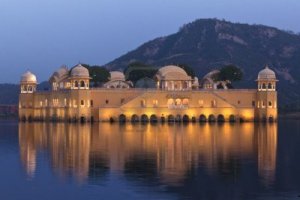
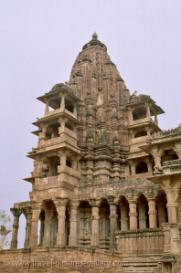
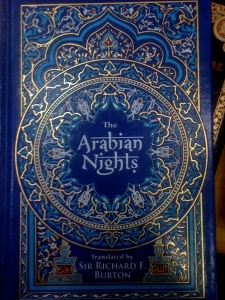 have Ali Baba and a cave filled with treasures of scent and spice, incense and frankincense — not stolen by thieves but given freely by the Sultan with the order to create the most luxurious scent in all the land. Or, it would be the story of “Perfume” without serial killers and death, and with a happy ending.
have Ali Baba and a cave filled with treasures of scent and spice, incense and frankincense — not stolen by thieves but given freely by the Sultan with the order to create the most luxurious scent in all the land. Or, it would be the story of “Perfume” without serial killers and death, and with a happy ending.

 under the guidance of its artistic director, Christopher Chong, and created by the famous orientalist nose, Bertrand Duchaufour. (“Orientalist” is Luca Turin’s description, not mine.) The men’s version was called Jubilation XXV and the women’s version was Jubilation 25. Both versions are eau de parfum concentration and both are essentially considered to be unisex fragrances. Certainly both genders seem to wear the different versions. I have both and plan to review Jubilation 25 tomorrow. For now, let’s focus on the men’s version.
under the guidance of its artistic director, Christopher Chong, and created by the famous orientalist nose, Bertrand Duchaufour. (“Orientalist” is Luca Turin’s description, not mine.) The men’s version was called Jubilation XXV and the women’s version was Jubilation 25. Both versions are eau de parfum concentration and both are essentially considered to be unisex fragrances. Certainly both genders seem to wear the different versions. I have both and plan to review Jubilation 25 tomorrow. For now, let’s focus on the men’s version.
